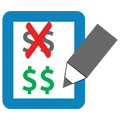
Price Optimization – Working with a Muddied Concept
What is Price Optimization?
The term ‘price optimization’ refers to the process of setting your prices in such a way that they are optimal in respect to your business objectives. But in practice, the term is used very loosely.
By selling products ranging from competitive price analytics to configure price quote (CPQ) all under the banner of ‘price optimization’, the definition starts to become muddied. The term ‘price optimization’ has also started to acquire a legal meaning. As recently as 2017, there are now 20 U.S. states to have gone as far as prohibiting ‘price optimization’ in specific industries, most notably, insurance industries (The Consumer Federation of America, 2017). Upon closer inspection, it appears that what is prohibited is price discrimination, not necessarily price optimization. But once the judicial definition was established, then that’s the new meaning legally. One more reason that it’s best for pricing practitioners to avoid court rooms. Even in circles of pricing quants, the term ‘price optimization’ is used somewhat loosely. Quite often, the term is used referring only to the demand modeling part: using mathematical techniques to determine how customers respond to different prices for its products and services through different channels. In the context of demand modeling, the term ‘demand elasticity to price’ is also liberally used as if it were synonymous with ‘price optimization’.
All these different views of ‘price optimization’ are relevant and potentially valuable to setting prices. The most fruitful and practical way of thinking about ‘price optimization’ is to take it in a broad sense. The process of setting your prices should include all pricing levers in your Go-to-Market strategies. Understanding the differences between these pricing levers and their roles is key to successful ‘price optimization.’
To illustrate the importance of these differences between pricing levers, consider the following basic observations:

List prices are just reference prices
You may set a list price, but most customers end up paying very different prices. When setting prices in a business-to-business context, in many cases, not a single transaction was paid at list price.

Customers care about the sales price
When you try to model the response of your customers to your prices, you should be including everything the customer has to pay, including any surcharges, cost of delivery, taxes, etc.

Customers don’t care about your cost structure
Your costs to produce the product are your problem, not your customer’s. The price the customer is willing to accept depends on the value your product brings and the alternative options the customer has.

Your objective is to increase your bottom line
From an optimization perspective, you care about the net price, i.e., the part of the sales price that you get to keep. Therefore, you should not include commissions, chargebacks, rebates, etc.
The price you should use for demand modeling is not the list price you post, and neither of those prices are the price you care about from a profit or revenue perspective.